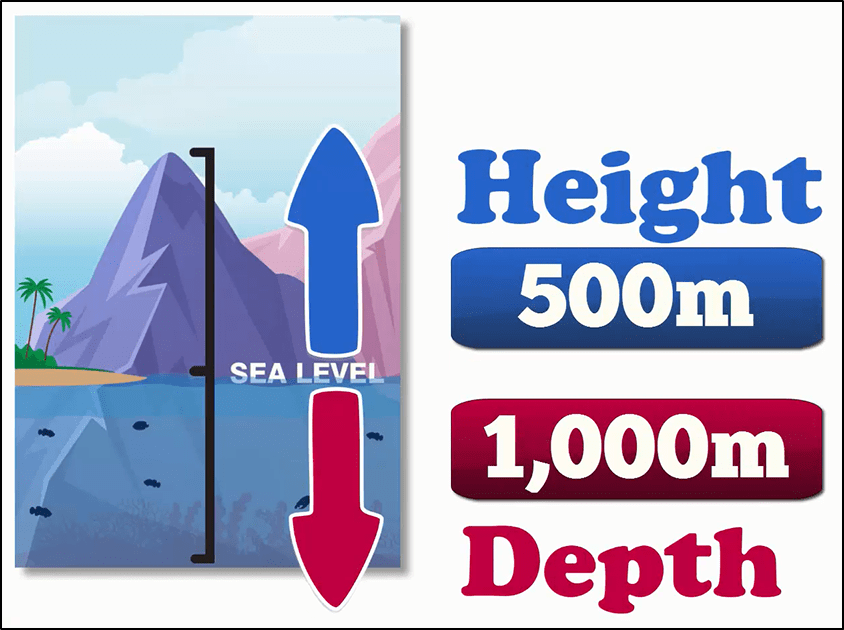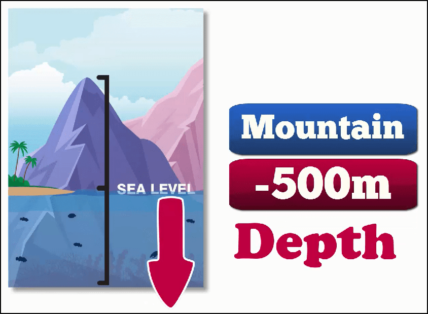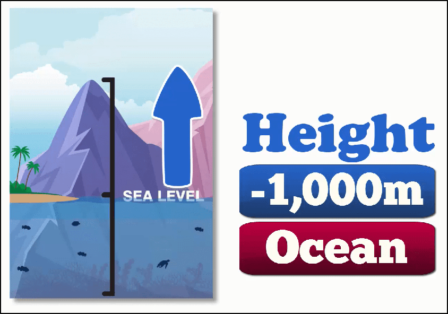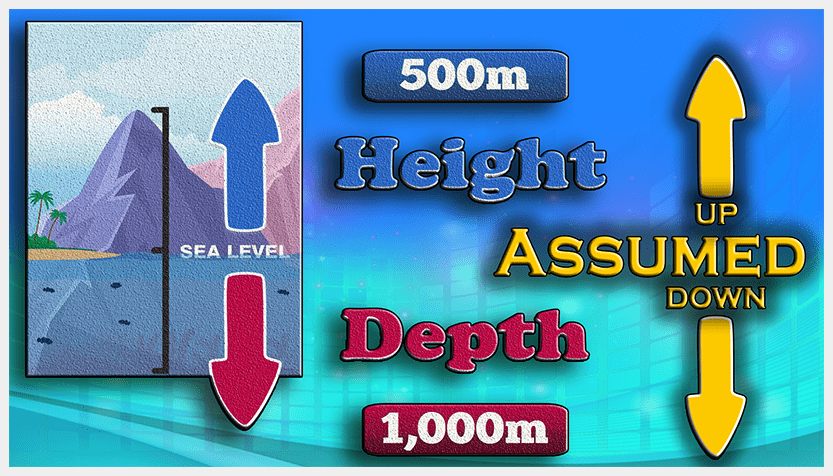The following video contains an excerpt from a consultation session I had with one of my students. The audio used in this video clip is an actual session audio. I have modified the slide to protect the privacy of my student and I’ve added graphics and direction arrows. Feel free to watch the video or scroll below if you prefer reading.
In order to illustrate the importance of a reference, I ask my students two simple questions. The first question is about a mountain and the second one is about an ocean. In this scenario, it doesn’t matter which mountain or which ocean. Students can imagine any mountain and any ocean they are familiar with.

The actual height of whichever mountain or the actual depth of whichever ocean doesn’t matter and it doesn’t need to be precise at all. The focus is only on whether the number is a positive value. Thus, what matters is to note that answers for the mountain height and the ocean depth are both positive values.
What you may not realize, is that my question “high” gives or assumes a direction. My question “deep” also assumes a direction. And both answers are positive, but they are in opposite direction! Thus the answers I receive are always obtained with respect to assumed directions.
So here is an exercise that is only ever recommended to engineers. Let’s assume opposite directions than what is generally accepted:
- Let’s assume downward direction and then express the height of a mountain
- Let’s assume upward direction and then express the depth of an ocean
Thus, with respect to these “new” directions, we can state:
The mountain is minus 500 meters deep
The ocean is minus 1,000 meters high


We would never say something like this, especially not to an ordinary person, because they would think we are just talking gibberish. And again, even though having a negative value in our statement is correct, we wouldn’t say it that way. At least not for the depth of a mountain or the height of an ocean. However, in engineering, statements that refer to negative values of electrical quantities are quite common. In engineering, we can arbitrarily choose the direction of a reference.
Note that when we talk about a mountain, we always say a positive value, assuming that the mountain is high, not deep. Similarly, when we talk about an ocean, we assume that the direction is down, so the ocean is deep, not high. That’s why we always end up getting positive values.
This article is Part 2 of the Power Sign Conventions triad of articles. It is recommended that you read all three parts to get a better grasp of how we end up with positive and negative signs of various Electrical Engineering quantities. You can find the other two articles by following the links below:
Alternatively, you can watch the full Power Sign Conventions video that contains all three subtopics in a single video (still not too long – just a little over 9 minutes):
I help my students get clear understanding of various Electrical Engineering concepts. A question of power sign conventions comes up quite often and I know from experience that students get easily confused with varying signs encountered in engineering.
Hopefully, you’ve learned something new today. If you’d like to become my student, you can schedule a consultation session of your own. Just go to eeSasha.com/help and pick the duration and time for your one-on-one consultation session!




